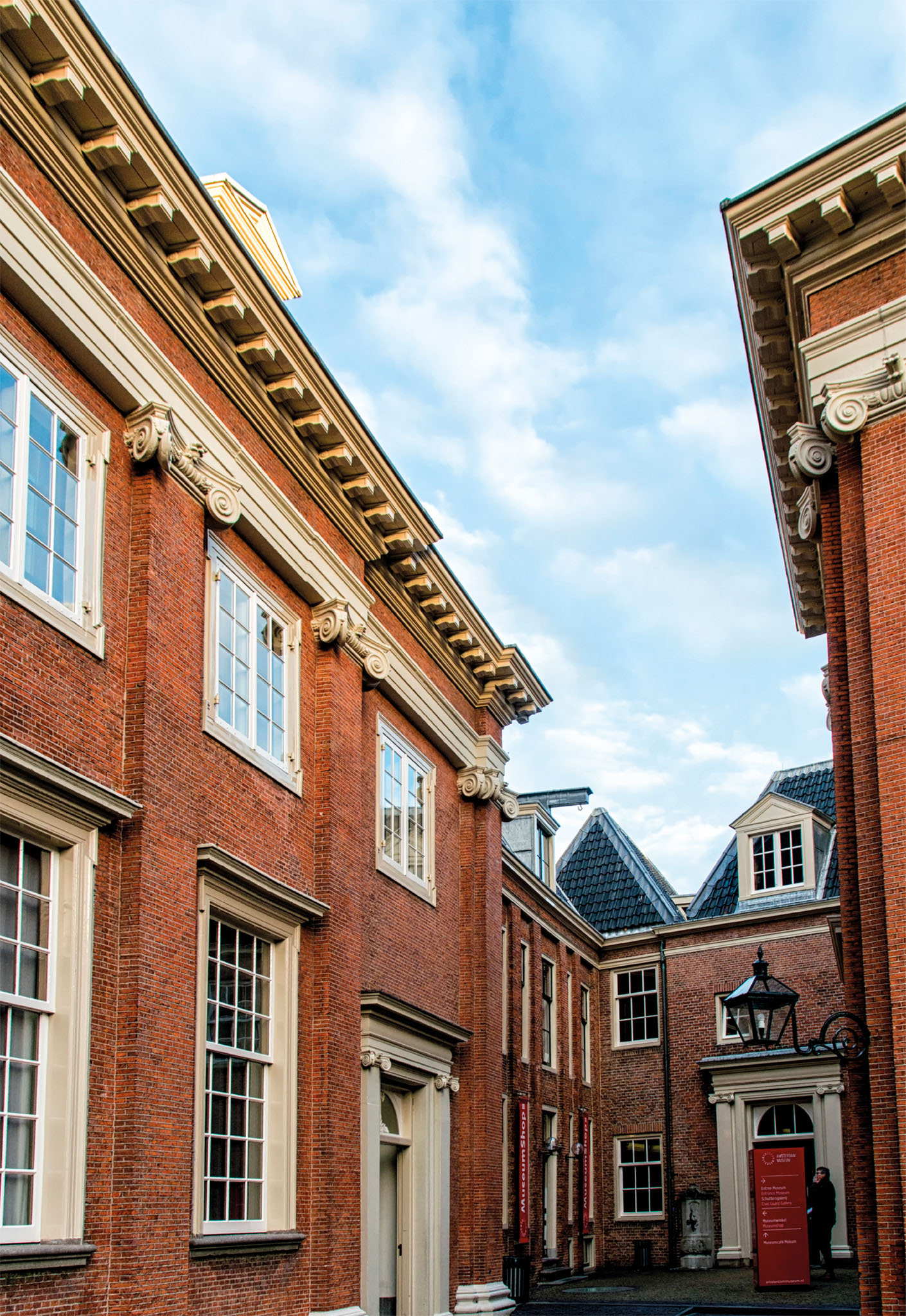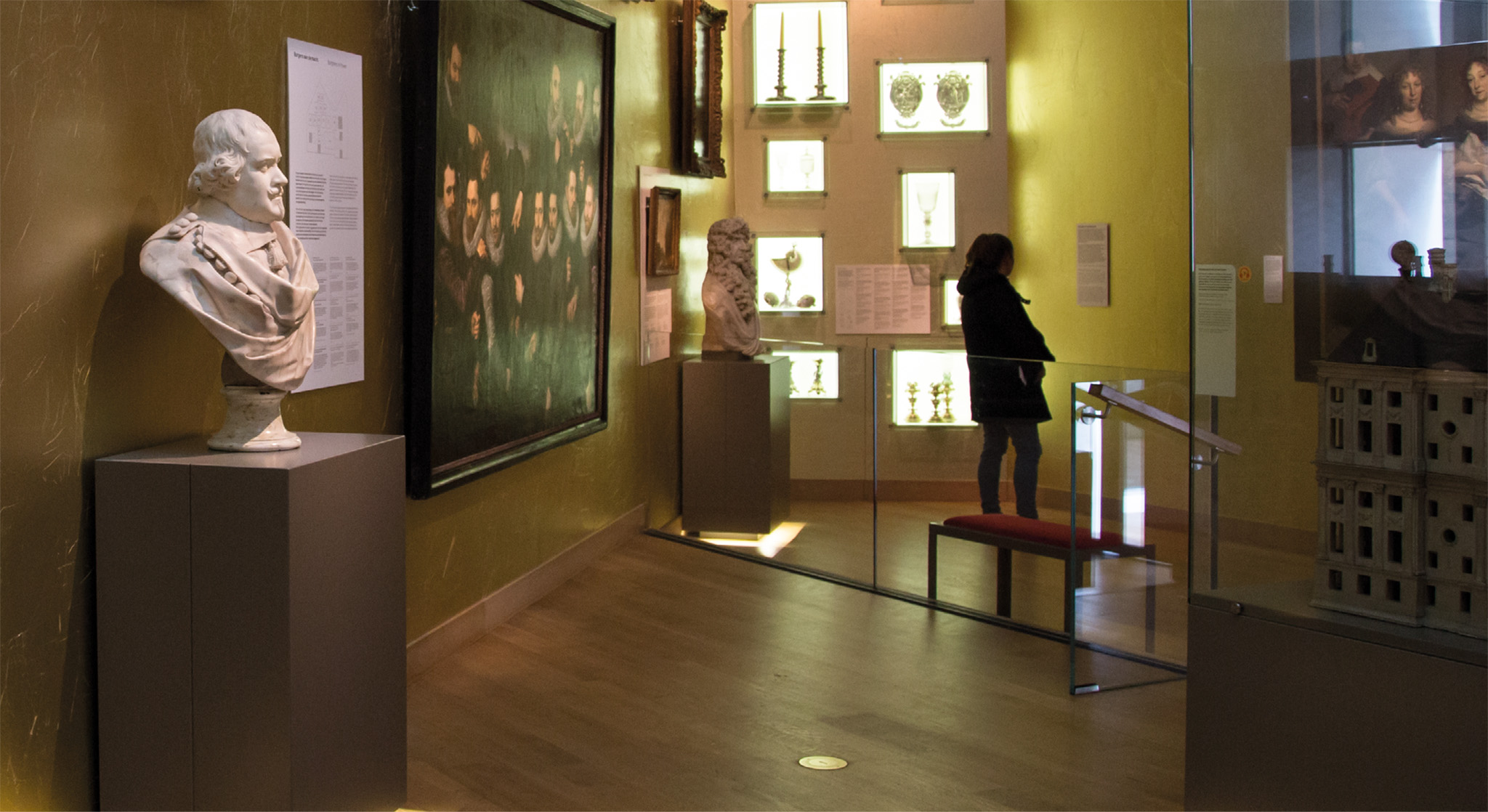
t Exhibits from the 20th century on display in Amsterdam DNA
g NIEUWE ZIJDE g Contents
E5 ⌂ Kalverstraat 92, St Luciensteeg 27 v 2, 4, 11, 12, 14, 24 q Rokin # 10am–5pm daily ¢ Public hols ∑ amsterdammuseum.nl
The city’s historical museum explores Amsterdam’s dramatic evolution from marshland to modern times, as well as the city’s future. The setting tells a story just as varied as the one told by the main collection. The red-brick building began life as the Convent of St Lucien, before it was turned into a civic orphanage two years after the Alteration.

t Exhibits from the 20th century on display in Amsterdam DNA
At the museum’s heart is the Amsterdam DNA exhibition, which offers a multimedia introduction to the development of Amsterdam, from its humble origins as a small fishing village at the mouth of the Amstel in the Middle Ages to today’s cosmopolitan city. Visitors can then explore the other rooms, where aspects of Amsterdam’s history are dealt with in more detail, including the city’s Golden Age in the 17th century. The Amsterdam Gallery also covers both the past and the present with exhibits ranging from 16th-century portraits to modern-day graffiti. Meanwhile, the Regents’ Chamber and The Little Orphanage unlock the building’s history.

t An interior courtyard of the red-brick Amsterdam Museum
Boys and girls played in separate courtyards when the building was an orphanage.
Experience Nieuwe Zijde
Highlights |

Amsterdam DNAThis one-hour, historical tour of the city explores Amsterdam’s main cultural characteristics, inclu-ding the spirit of enterprise, freedom of thought, civic virtue and creativity. Touch-sensitive screens and archival film footage are used to great effect. |

Amsterdam GalleryLeading from Begijnensteeg to the museum, this is the world’s only “museum street” which does not have an admission charge. Don’t miss Albert Jansz Vinckenbrinck’s wooden statue of David, Goliath and His Shield-bearer (1648–50). |

Regents’ ChamberBuilt in 1634, this room was the meeting place of the orphanage’s directors (regents). Its fine ceiling, added in 1656, shows the orphans receiving charity. Portraits of the regents hang on the walls. The long table and cabinets are 17th century. |

The Little OrphanageThis exhibition gives children and parents the opportunity to experience life in a 17th-century orphanage. Along with authentically arranged classrooms, kitchens and animal sheds are talking exhibits and pop-up characters to guide visitors through life in the orphanage. |